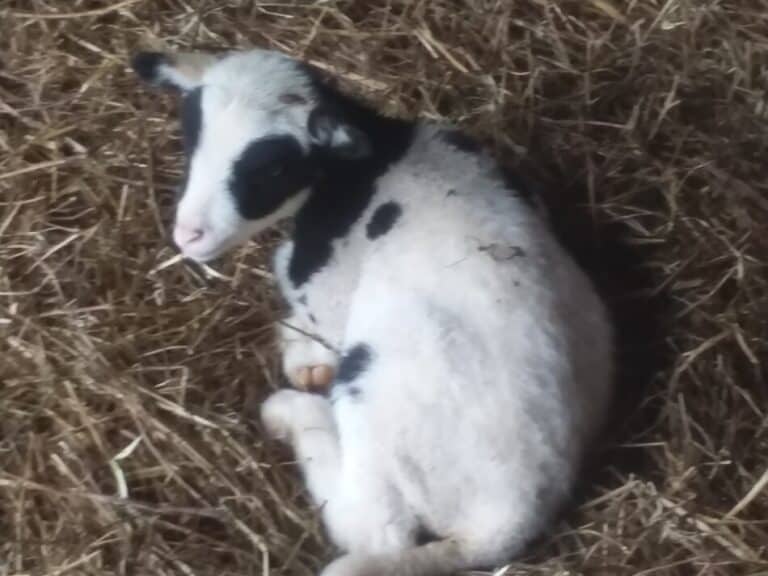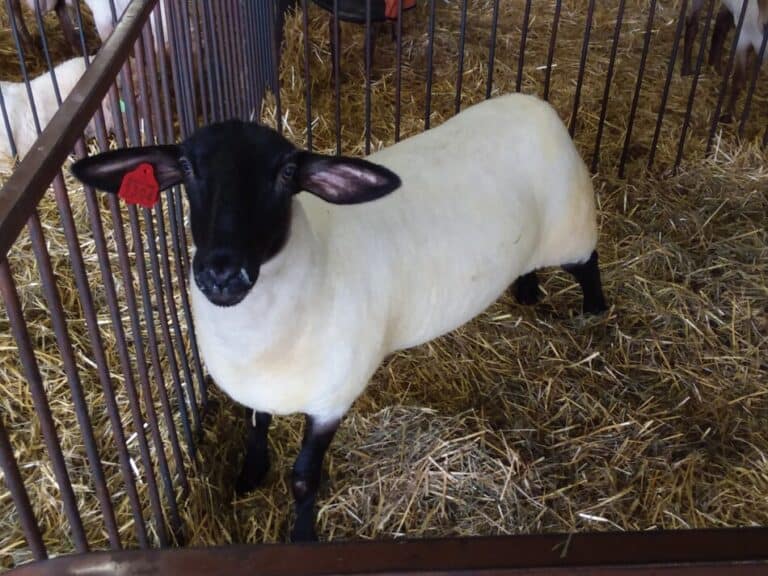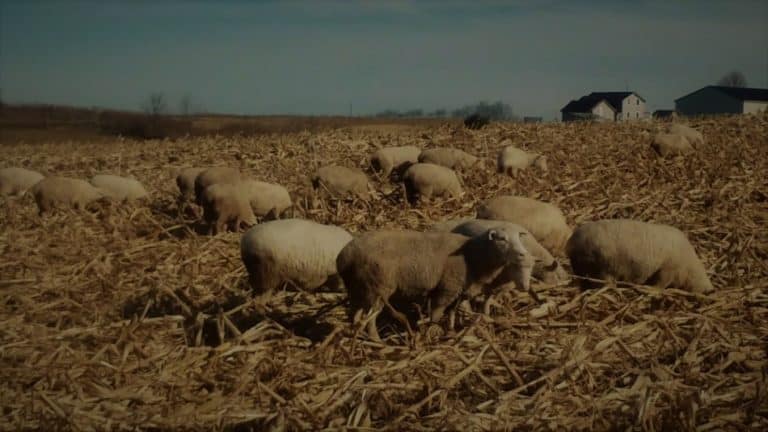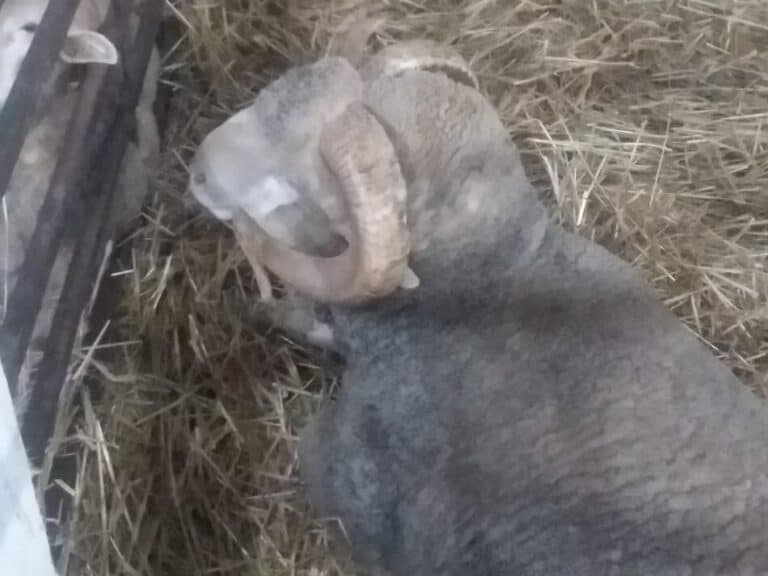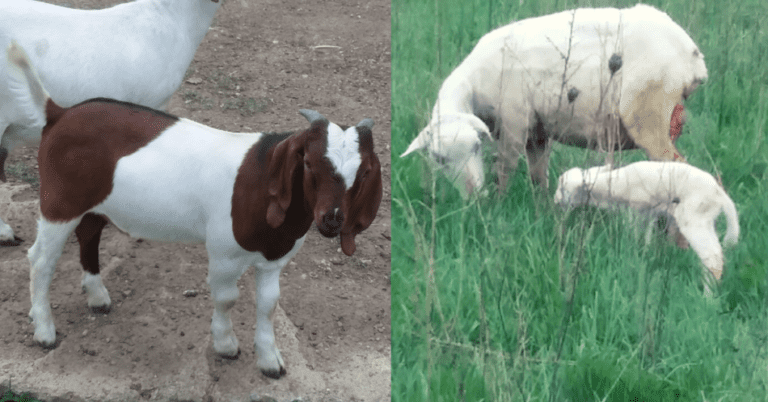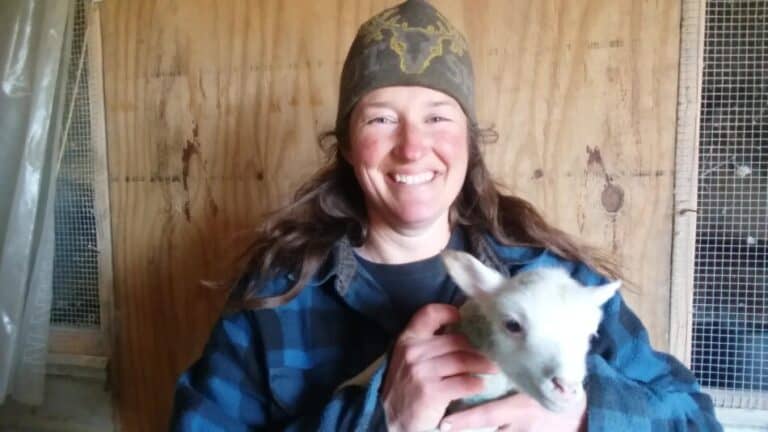Is Raising Sheep Worth It? (Will your flock make money?)
Will your flock make money? That is a tough question to answer, since the real answer is “it depends”. But, since “it depends” is not a helpful answer in the slightest, let’s dig into the things that will be helpful.
Let me be upfront with you, you’ll have to do some math here and do your own research to find the prices for your area. I’ll give you some ideas on where to look, but you will still have to figure it out.
No need to worry, this is all basic stuff that should be fairly easy to find and even if your area does not have specifics, you can find information that is close enough to get you started.
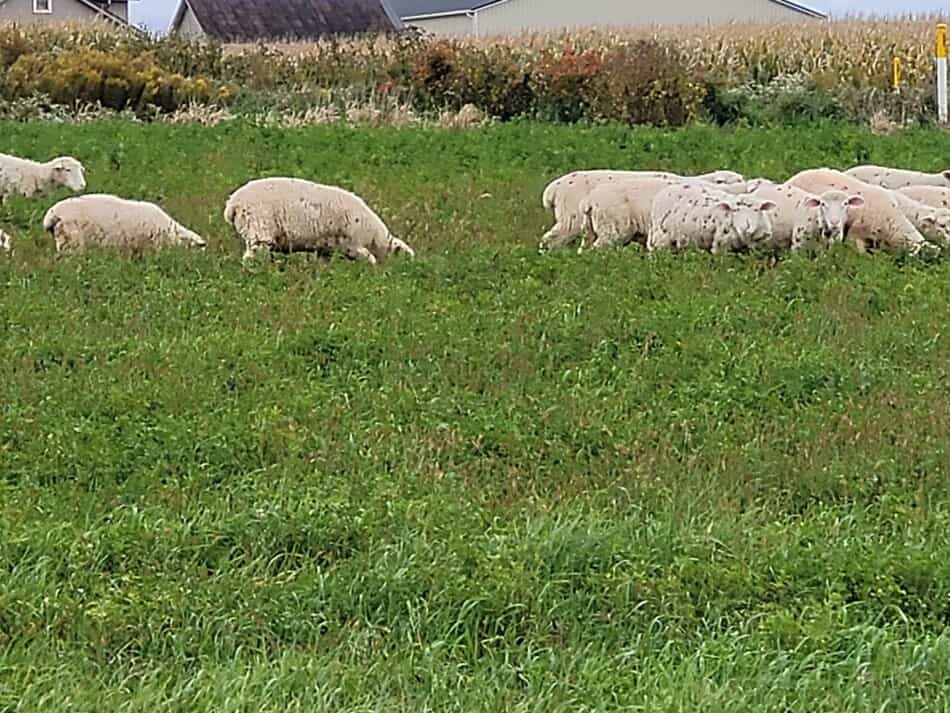
Sheep can make money
Year over year, sheep can and do make money, but that doesn’t necessarily mean that your sheep will make money. Profitability depends on the fit of your sheep, your costs, your area and you.
Let’s say it costs you $80 to feed and care for each ewe per year. This will be winter hay, some medical things like dewormer, mineral, etc.
If she raises one lamb that you sell off of pasture for $100, you keep $20. If she raises one lamb that you sell off of pasture for $200, you keep $120.
If your feed costs for the ewe are more in the $110 range, then raising a single lamb that sells for $100 loses money, but selling it for $200 would make money.
Twins bring in more, but don’t count on higher numbers or close to perfect results until you are sure you can repeatedly get them.
Raising Sheep For Profit is my article that gives you a look at expenses and income from raising sheep for the year.
Prices for lambs, at least in our area, are lower than they were last year and that has a lot of folks who got into sheep recently very disappointed.
Consider the longer term and you’ll probably see that prices are still good, just not as good as the super high prices of last year.
If sheep were a good fit for you and your situation last year, they are probably still a good fit for you and your situation this year if you run the numbers.
Sell at a different time or to a different customer
You have some other options as to when to sell your lambs, two that come to mind are private sales or wean the lambs and feed them separately before they are sold. If you go with either, add in those costs as well.
For instance, in my area lambs straight off of pasture in the late summer, early fall are $100-120. If we feed them inside for a few months for $20 more in costs per head, then we get $75-100 more per lamb.
True, the additional feed does not just show up in the barns, we have to put in more time and care with these older lambs, but that’s the trade off for the additional pay per lamb.
So, for us a single producing ewe with us selling straight off of pasture lambs is not that great money wise. They are making money, but not what they bring with a bit of extra work and time.
You choose when and how you sell lambs
This is the kind of thing that you need to consider, not doing it our way, but the different options that you have and how will that affect your profitability. Do the math on a few options and see what you find.
None of these numbers include things like your time, rent, etc. Those numbers are definitely important, but I leave them out on purpose, since these things vary significantly from person to person.
Best Sheep To Raise For Profit (no matter where you live!) is my article that will help you match your wants and needs with the type of sheep that will make the best use of your resources.
First few years, probably not
The first few years, you probably will not make money. Between getting your management figured out and normal beginner type mistakes, it will take a few years to get your flock rolling and productive.
You are working against the initial price you paid for the sheep, plus feeding them and caring for them (add in things like fencing) and your inexperience (which you’ll only get by trying!).
Once again, this is normal and to be expected. If the sheep have to pay you back, or even make money for you the first year, that is probably not going to happen.
This is the hardest part of sheep raising to get through, figuring out your new role as a shepherd and figuring out what the sheep need. You’ll get there, if you are willing to put in the work and learn.
There is the potential, depending upon the prices in your area, to buy feeder lambs, feed them out and resell the finished market lambs for a profit, but that is about it for making money the first year.
This would eliminate some of the common problems with ewes raising lambs, but would give you more to deal with in the lambs since they would be under more stress after moving and changing feed rations.
In our area, at least right now, this is the idea that has the most potential, since you could get the lambs for just over the cost of feeding the ewe for the year.
Of course, this idea has it’s own set of learning and experience required, mainly handling the feeder lambs that have just went through the stress of the sale, but from the numbers, it’s an option.
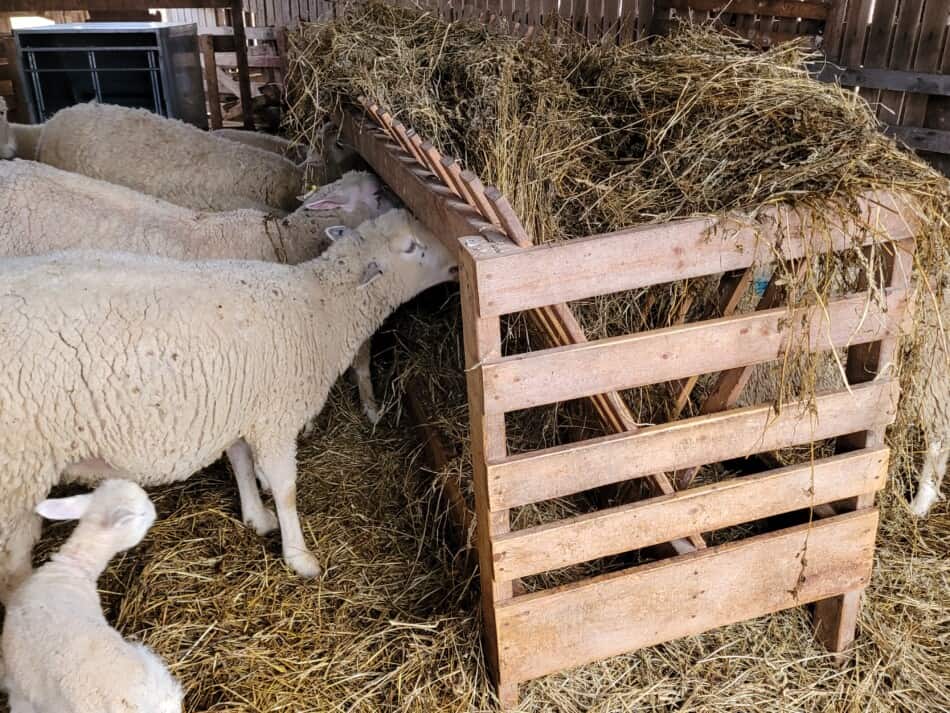
What are your feed costs for the flock?
Feed costs are your biggest expense each year. Everyone has this cost but how much it is and what you are paying for vary.
Here are the variables you’ll work with: weight of the ewe, length of hay feeding season and cost of hay.
I started out with an example of $80 per ewe, which is mostly winter feed costs. You’ll need to calculate 4% of her bodyweight per day in hay for all the non grazing season then get the cost of that hay.
For example: if your hay costs $200 a ton and you need to feed your sheep for 4 months a year on this hay, you would figure 150 pound ewe x 4% = 6 pounds of hay per day.
4 months x 30 days per month= 120 days x 6 pounds of hay/day = 720 pounds of hay, which is .36 of a ton of hay per ewe or 14.4 square bales (50 pounds each) of hay per ewe.
If your hay is $200 per ton and each sheep is eating .36 (just over 1/3) of a ton each, it will cost you $72 in hay for that ewe.
Don’t get too hung up on these numbers exactly. Your sheep need what they need and you have to adjust to that as you go. The reasons for variation could be the sheep or your management.
Are you able to graze in your area 9 months per year? Then you’ll be feeding less hay than most other folks. If you feed your sheep inside most of the year, factor that in, as well.
Do you rent pasture lands? Are you creep feeding lambs (giving them grain)? If so, add in those costs.
How Many Bales Of Hay Do Sheep Need? is my article that will help you work through figuring out how much hay your sheep will need for the non grazing season on your farm.
Ewes with lambs cost more to feed
Another cost that folks can overlook is if you are planning to ewes with lambs in the barn.
Nursing ewes need a higher level of nutrition than gestating ewes and don’t forget about what you will have available for the lambs to eat.
Lots of sheep producers in our area raise lambs to 60 pounds or so, all done inside, then sell these lambs and hope to get another crop of lambs soon, so more than one birth cycle per year.
This works well to get more lambs to sell, if you have the facilities to handle your sheep like this, but it will significantly raise the prices of feed for the group. That’s not a problem, just an important thing to also factor in.
Problems can increase feed costs
When things go wrong in your flock it will generally result in an increase in feed costs. Until you get the problem straightened out, you’ll continue to have higher than expected costs.
For instance, if your sheep need dewormed, your numbers will be a mess. Why? You’ll be feeding all kinds of hay and getting no results (or the sheep can be losing weight) because of the worms.
You’ll still have to get it sorted out and of course pay for the hay, but that is not normal costs, just pricey learning.
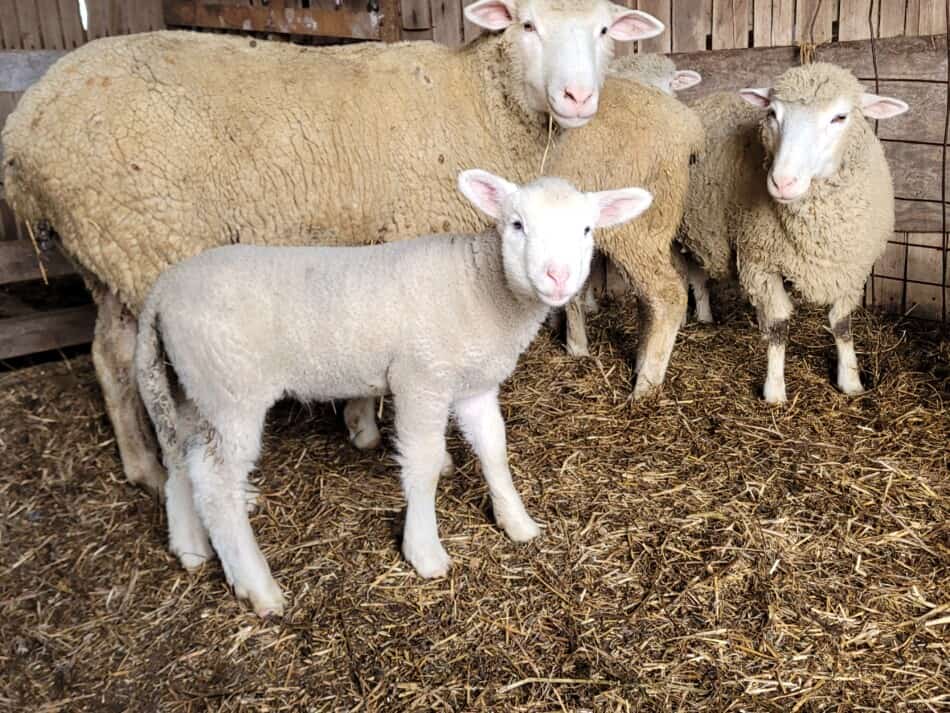
Cost for flock is upfront
Another challenge with getting started with sheep is that you will have some substantial costs upfront, before any income is even close to coming in.
The first year’s costs that I can quickly think of are:
- getting the sheep themselves
- feeding, grass and hay
- fencing portable, permanent or combination of both
- shelter, barn or shed
The main catch is that these costs are all paid before you sell any lambs, so you have the starter flock purchase and the first year’s worth of expenses before you get any money coming back in.
This is not an insurmountable problem, it is just a hurdle that you need to plan for and get past in order to succeed.
How Much Do Sheep Cost? is my article that helps you figure out the cost of high quality sheep in your area.
Raise your own ewe lambs to grow flock
You can keep your initial costs lower by keeping back some of the ewe lambs that are born the first year to grow your flock size, that’s what we did, but the catch there is that means you have less lambs to sell.
If you keep back replacements, you’ll also have more head to feed over the non grazing time. Adding to the flock is great, once they start to bring in money, but at first it does cost more in feed and time.
How Much Does A Ewe Lamb Cost? is my article that goes into what to look for in ewe lambs.
Caring for your flock will take some effort
Caring for your flock will take some time and effort on your part. The sheep will not take care of themselves. Even low maintenance or easy care sheep still need some care and management.
How much care your sheep need will depend upon what sheep you have and your farming situation.
It’s tough to give an exact number here, but plan to spend some time with them twice a day or so until you have them figured out.
One of the best things you can do for yourself is to observe your sheep so you learn what is normal for them and what is odd.
This takes time and must be done in person, there are no substitutes or quick fix alternatives to time spent with the flock.
Your sheep plan will take some adjustments
Your plan for the flock will need some adjustments. What adjustments? You don’t know until you get in there and give it a shot, then adjust as you go. This is all part of livestock husbandry.
If your sheep came from a similar situation to yours
If you got your flock from a farm that is similar to yours and you are raising the sheep in a very similar manner, things should be easier the first few years since little changed for the sheep themselves.
Even so, once you get going, you may have to make some small changes to get the results you want.
Since you have started with sheep from a flock similar to yours, the changes should be minor, but there will still be some. Expect and welcome them, it means you are getting somewhere!
If your sheep came from a different management situation
If you sourced your sheep from a farm using different management than you plan on using, or from a different situation than you have for your sheep, you’ll have some sheep that will not make the switch.
These sheep will need to be culled or given extra care. This is normal but should get sorted out in the first few years, as long as you keep track of the ones that are not doing well for you and sell them.
Remember, you decide what is good and what is not. If you love the sheep that needs extra feed in the winter, keep her, just realize what you are doing.
The other aspect of your sheep plan is probably you, your thoughts and how you had envisioned shepherding to be before you got started. Once again, this is normal.
It’s likely that some of the things that you were worried about will be less of a big deal than you thought they would be and other things turn out to be a bigger problem that needs sorted out.
You’ll get there, this part of the process for everyone.
Sheep 201: A Beginner’s Guide to Raising Sheep is a good place to start. It’s an index of sheep management topics that are linked more articles on the site, it’s definitely worth a look.
